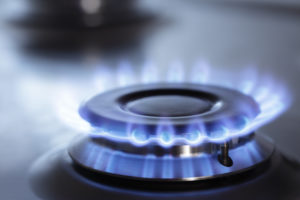 Natural gas fell on Friday, capping a tenth weekly decline in eleven, amid speculations that warmer-than-usual weather across the majority of the US will induce lighter national heating demand.
Natural gas fell on Friday, capping a tenth weekly decline in eleven, amid speculations that warmer-than-usual weather across the majority of the US will induce lighter national heating demand.
Natural gas for delivery in March slid 0.81% on Friday to settle the week 4.1% lower at $2.579 per million British thermal units. Prices held in a weekly range between Tuesdays high of $2.783 and Fridays trough of $2.567, the lowest since June 2012.
NatGasWeather.com said in a Friday report that natural gas demand in the US will become moderate through February 12th, with a warm weather trend for the western US over the next seven days, while the Great Lakes and Northeast turn colder.
Very warm conditions will dominate the southern, central and western US through mid-February, curbing national heating demand to lighter than normal, even though the Northeast and Great Lakes remain in the grip of chilly conditions and receive another round of snowfall on Sunday into Monday.
Market players will watch closely how weather patterns develop over the northern US as a cold blast with frigid Arctic temperatures is expected to push through on Wednesday and extend its reach into Texas and the southern US, increasing national heating demand.
The Energy Information Administration reported on Thursday that US natural gas inventories fell by 115 billion cubic feet in the seven days through January 30th, below analysts’ projections for a withdrawal in the range of 117-123 bcf. This compared to the five-year average of 165 bcf, while inventories declined by 259 bcf during the comparable period a year earlier.
Total gas held in US storage hubs amounted to 2.428 trillion cubic feet, narrowing the deficit to the five-year average stockpiles of 2.457 trillion to 1.2%, or 29 bcf, from 3.0% a week earlier. The surplus to the year-ago storage of 1.960 trillion cubic feet expanded to 23.9% from 14.6% during the preceding period.
This week’s drop, to be reflected in February 12th’s report, is likely to be much closer to the average as the recent cold blasts over the North and East are factored in. Nevertheless, the damage to the market may already be done as the current readings in the upper 60s through lower 80s across the majority of the country through most of next week will lead to a much leaner inventory decline for the report due on February 19th, bearing the potential to turn deficits into small surpluses.
However, arriving cold blasts around February 13-17th will spur high heating demand for the Midwest and Northeast, which should keep inventories from extending any surpluses and hover around the average.
“If cold blasts were able to push a little further west and south with sub-freezing temperatures during mid-February, weather patterns would become moderately bullish,” NatGasWeather.com said in a Friday mid-day update. “Although, we are now seeing enough data to suggest the cold wont last after February 17th and the pattern will trend milder over much of the US.”
Temperatures
According to AccuWeather.com, readings in New York on February 10th will range between 21 and 37 degrees Fahrenheit, compared to the average 28-40, but will drop to as much as 6-15 degrees three days later. Return to seasonal and slightly below-seasonal readings is expected after February 17th. Temperatures in Chicago will fail to exceed 26-27 degrees for the next almost two weeks, compared to the average 36-37, with lows remaining firmly in the teens.
Down South, highs in Houston will reach 77 degrees tomorrow, 12 above the usual, before easing to seasonal and slightly cooler through February 20th. On the West Coast, readings in Los Angeles will max out at 82 degrees on February 11-13th, 14 above usual, and will likely peak in the low-mid 70s throughout the month.
Pivot points
According to Binary Tribune’s daily analysis, March natural gas futures’ central pivot point stands at $2.593. In case the contract penetrates the first resistance level at $2.618 per million British thermal units, it will encounter next resistance at $2.658. If breached, upside movement may attempt to advance to $2.683 per mBtu.
If the energy source drops below its first support level at $2.553 per mBtu, it will next see support at $2.528. If the second key support zone is breached, the power-station fuel’s downward movement may extend to $2.488 per mBtu.
In weekly terms, the central pivot point is at $2.643. The three key resistance levels are as follows: R1 – $2.719, R2 – $2.859, R3 – $2.935. The three key support levels are: S1 – $2.503, S2 – $2.427, S3 – $2.287.





